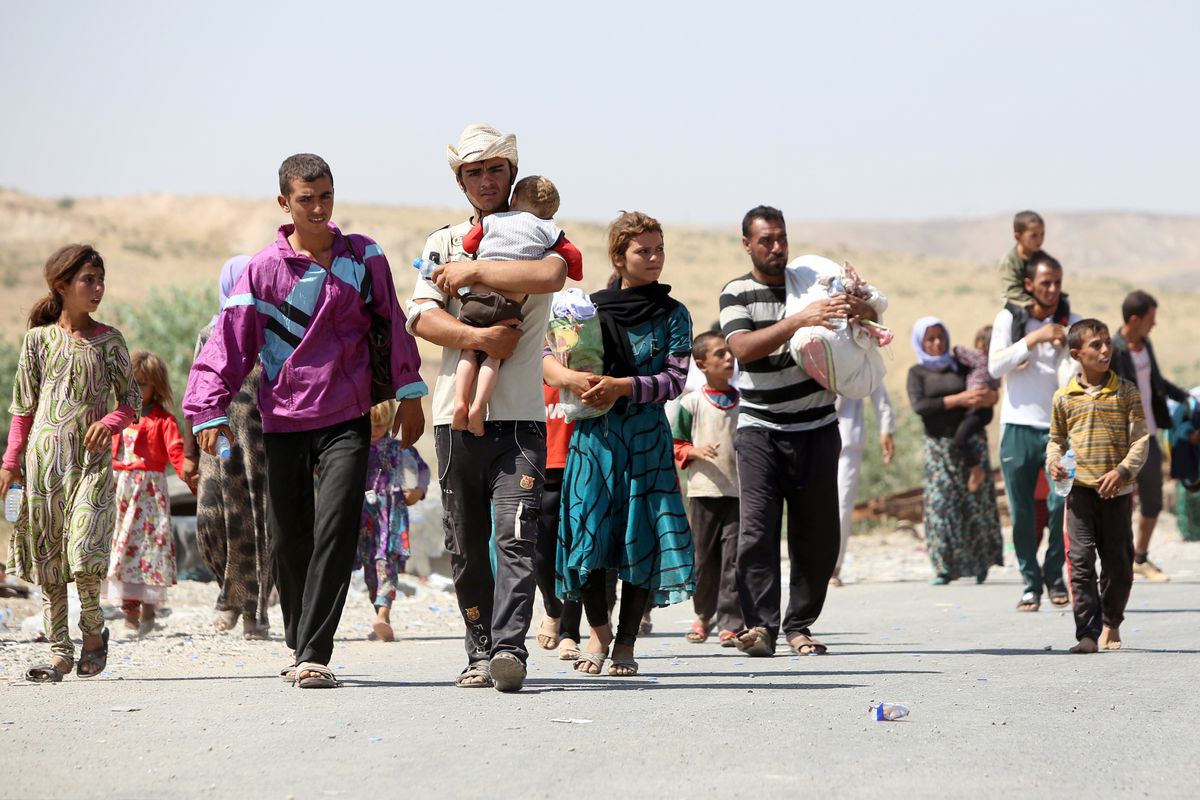Intense fighting broke out between the Iraqi Army and Yazidi fighters affiliated to the Kurdish rebel group the Kurdistan Workers’ Party (PKK) on May 1 and 2 in the region of Sinjar, in northwestern Iraq.
The clashes displaced thousands of Yazidi people for a second time – as many as were only recently resettled in the area after fleeing the Islamic State group in 2014. Our Observer told us about fleeing the fighting.
Yazidis are a Kurmanji-speaking minority who are indigenous to the Sinjar region in Iraq. They follow a monotheistic religion with similarities to the ancient Persian religion of Zoroastrianism.
The Iraqi Army wants to enforce an agreement signed between Baghdad and Iraqi Kurdistan providing for the withdrawal of Yazidi fighters and PKK fighters from the Sinjar region. But the Sinjar Resistance Units (YBŞ), a Yazidi militia created in 2014 to fight the Islamic State group, don’t want to withdraw and accuse Baghdad of wanting to take control of their region.
READ ALSO: Sudan lifts state of emergency after deadly anti-coup protests
On the night of May 1, the Iraqi Army finally launched an offensive to push back Yazidi fighters, some of whom had taken up positions in civilian areas in villages near Mount Sinjar.
‘Local residents were terrified’
When the fighting broke out on May 2nd, our Observer, Ferhad (not his real name), was at his uncle’s house in the village of Sinuni. He fled with his family to neighbouring Iraqi Kurdistan.
I called one of my friends and he told me the Iraqi army was attacking the Sinjar Resistance Units, with tanks and helicopters. Local residents were terrified. We fled in a car. I saw lots of other families heading for the Sinjar mountains and villages that were not affected by the fighting.
There were 22 of us in the vehicle. We made our way to a refugee camp in Iraqi Kurdistan.
After the attack, about 10,000 displaced persons flooded into the camps in Iraqi Kurdistan. Many of the newly displaced were already forced to live in these camps once after fleeing the Islamic State group back in 2014. Many have moved into already overcrowded tents with family or friends already living there.













